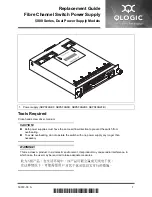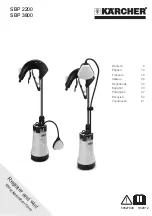
MNX10010 / Rev B
4/11/2008
5
Operating Procedure
To operate the PS03 with a sensor, connect the sensor cable to the BNC
‘Sensor’ jack on the channel one of the PS03 using the appropriate cable and or
adaptor.
(Refer to Figure 2.)
Connect the ‘Output’ jack for channel one to the input of the readout instrument
(oscilloscope, voltmeter, recorder, etc.) using an appropriate cable. The BNC
output jack on the PS03 eliminates the need for cable adaptors for the readout
connection.
Move the rotary channel select switch on the front panel to the channel 1 position
which turns the power on and selects channel 1 for monitoring on the front panel
voltmeter. Wait a few seconds for the coupling capacitor(s) to fully charge. The
meter may indicate a slow drift while the capacitor is charging.
When conditions stabilize, observe the front panel meter. Normal operation of the
sensor is indicated by a mid-scale reading on this meter. The normal mode of
operation for most sensors is in the “Normal’ area of the meter scale.
Depress the ‘Batt Test’ pushbutton switch and observe the battery voltage. The
meter should read to the right of the ‘Batt OK’ line at the right hand end of the
meter scale if the batteries are fresh. When the battery test function yields a
reading well below the Batt OK line, it is time to replace the batteries. While the
sensor will continue to function even with low batteries, clipping of the signal may
occur on the top (positive) side of the dynamic signal if the sensor signal plus the
sensor bias approaches the battery voltage.
The system is now ready to operate. Connect two more sensors if desired and
follow the same procedure as for channel 1.
Section III
Operation
Oscilloscope or other
readout instrument
NOTE: To prolong battery life, remember to switch power off when the
system is not in use.
Typical Sensor
Figure 2. Systems Interconnect
Model PS03





























